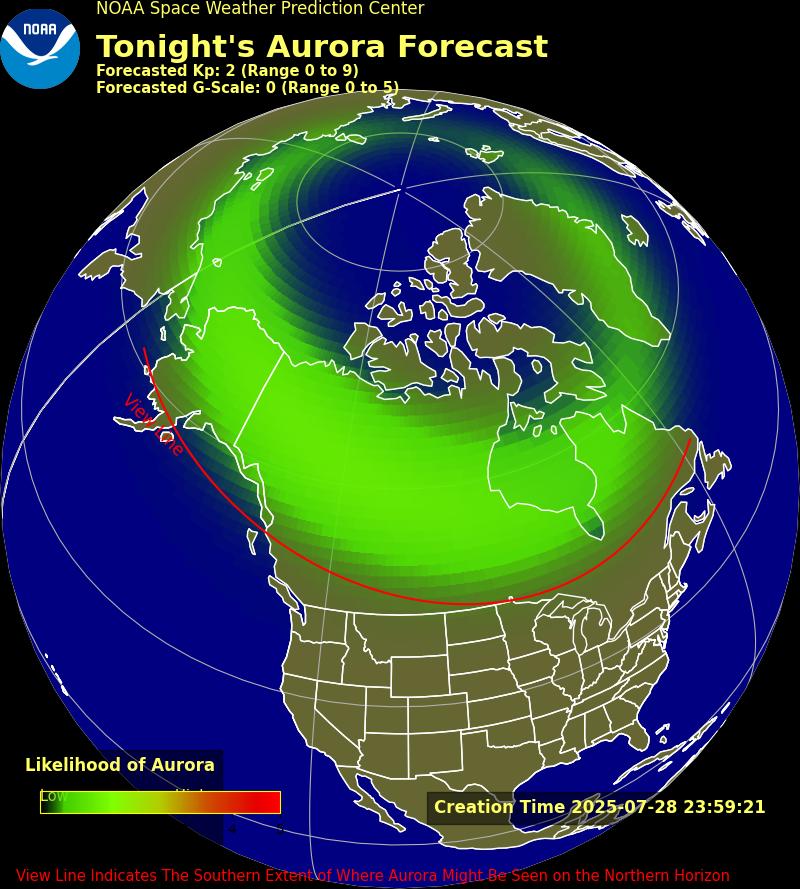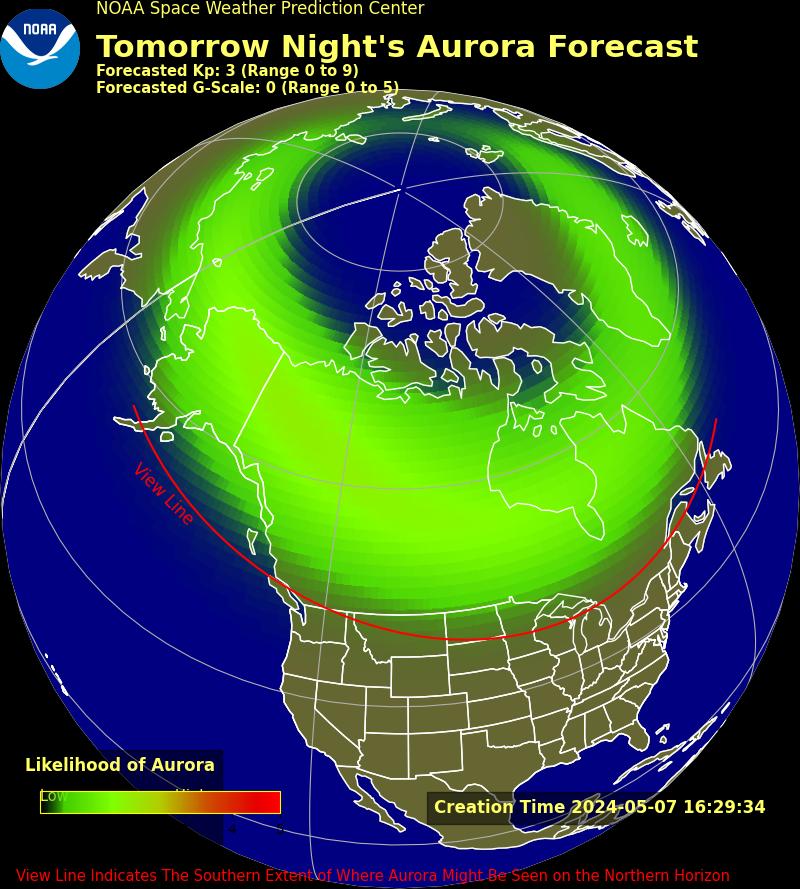Parts of the Midwest and Northeast states may have the opportunity to witness the captivating northern lights on Sunday night, according to an alert sent by the NOAA Space Weather Prediction Center.
Forecasts from the Prediction Center indicate that residents as far south as Nebraska and central Iowa may be able to see the mesmerizing aurora borealis if conditions permit. The expansion of the lights is influenced by a coronal mass ejection from the sun, which has caused a strong geomagnetic storm.
NASA describes coronal mass ejections as “huge bubbles of coronal plasma threaded by intense magnetic field lines that are ejected from the Sun over the course of several hours.” The space agency states that they often resemble “huge, twisted ropes” and can occur with solar flares or explosions on the sun’s surface.
The view line for this celestial event will diminish on Monday, as forecasts indicate that the southernmost reaches of the view line will touch central Minnesota.
‘Mitigate Possible Impacts’
The Prediction Center reassures the general public that there is no need for concern regarding the increase in geomagnetic activity. However, infrastructure operators are advised to take action to mitigate any potential impacts.
The release also mentions that there may be some technological effects on the power grid and spacecraft.
Sunday Morning Show and Future Appearance
The northern lights made a preliminary appearance in the Northwest and in certain areas of the country Sunday morning. Weather observers were able to capture the lights in Washington and Wyoming.
However, Sunday may not be the only opportunity for the aurora to make a appearance in the south.
The solar forces that produce this stunning celestial display are predicted to reach a higher intensity level than previously thought. Forecasters from NOAA’s Space Weather Prediction Center announced that solar activity will increase more rapidly and peak at a higher level compared to the predictions made by an expert panel in December 2019. The updated forecast now indicates that Solar Cycle 25 will peak between January and October of 2024.
Contributing: Doyle Rice, USA TODAY
Here’s your space weather forecast: Why feds are warning about solar storms headed for Earth



